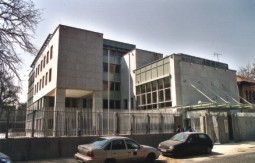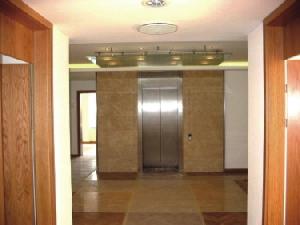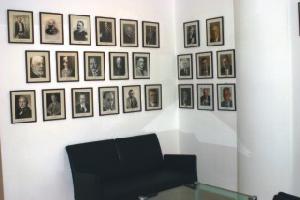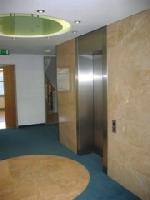Residence

A modern approachCool, modern and airy, this granite, glass and steel construction, which highlights efficiency and flexibility is the new German EmbassyOne way to avoid remaining in a property that could be reclaimed by its former owner is to build a new one. In 2003, the German Embassy took the step of moving into a new construction, when it changed from its location on Strada Rabat, which houses the administrative, consulate, military, press, cultural and economic departments. But they are not alone. A new Canadian Embassy is on the verge of completion, while new embassies from the UK, the USA and Japan have at least been in the planning stages. “The old embassy was too small and outdated,” says counsellor Mathias Kruse of the old venue and now around fifty Romanian and fifty German staff work in the state-of-the art offices in a stark Modernist style. The spacious interiors seem well-equipped for a country that boasts a burgeoning trade with its Balkan EU partner and an ever-present queue of hopeful migrants waiting outside in all weathers to try and secure that work or residency permit in the northern European nation. Clad in chrome and soft colours, with concealed light sources, this is a modern ergonomic office, which could easily double-up as the HQ to a medium-sized firm if the Embassy ever decided to relocate. The only obvious concessions to caprice include electronic Venetian blinds, a fountain in the front courtyard and creeping vegetation inside, where the plants have begun to twist around the metal balustrades.  Also, outside the Ambassador's room, hang pictures of all the previous incumbents since 1880, showing how the diplomatic corps has changed, from wearing the most extraordinary of military headgear to the more formal suit and tie, over its 125 years of diplomatic relations. Also, outside the Ambassador's room, hang pictures of all the previous incumbents since 1880, showing how the diplomatic corps has changed, from wearing the most extraordinary of military headgear to the more formal suit and tie, over its 125 years of diplomatic relations. Architectural office AIC Holding AG was responsible for the concept and the execution, while architects Studio 10M from Bucharest were assigned to locally supervise the work. Tercon was involved as project manager and investor, building the block from scratch, after knocking down a post-war building on its site. Situated in the architecturally eclectic Kiseleff area, where houses seem to borrow from the Brancovenesque, Classical, Oriental, Baroque and Art Deco styles, often within the same building, this is a confident and consistent construction and, depending on one's taste, a welcome contrast or incongruity among its eccentric neighbours. The firm arranged payment through a public-private partnership, whereby the company built the property, then leased and eventually sold it to the German state. Tercon has also built the Romanian embassy in Berlin. “These types of buildings are often in great danger,” says Tercon's general manager Romania Edmond B Desliu. “It is exactly this discrepancy between the openness (representation) and the closeness (security) of the building, which was considered and solved from the functional and the architectural point of view.”  The openness is represented by the steel and glass façade, which allows a lot of natural light to enter the rooms, while visible security is evident by the slightly military-looking fence. Desliu says the size, the assembly of the parts and the choice of cladding fit into the rich neighbourhood of the Kiseleff area. The openness is represented by the steel and glass façade, which allows a lot of natural light to enter the rooms, while visible security is evident by the slightly military-looking fence. Desliu says the size, the assembly of the parts and the choice of cladding fit into the rich neighbourhood of the Kiseleff area.The cashmere white pole construction on the outside is made of a natural stone cladding of granite. The walls are plastered or employ a gypsum plasterboard, while there is parquet flooring and natural granite stone in the hallways and staircases. Many of the incorporated materials, such as the façade and the entire housing technology, have been imported from Germany and central Europe. Over a 3,500 sqm gross floor space, this reinforced concrete steel construction aims to be one of the safest buildings in Bucharest. It was completed according to the German standards (DIN), which aim to foreground safety in every aspect, such as having the stairs on the outside and fire-proof interior fittings. “Through its quality and very good location the embassy meets all the requirements for a real A class building office with special functions,” argues Desliu. “It is probably the only one of the type in Romania.” This means that, following 2007, once the EU-trained surveyors arrive in Romania with their lists of building regulations, it will be ready for those norms. And if that was not enough, it could also make the insurance cheaper. |
|

